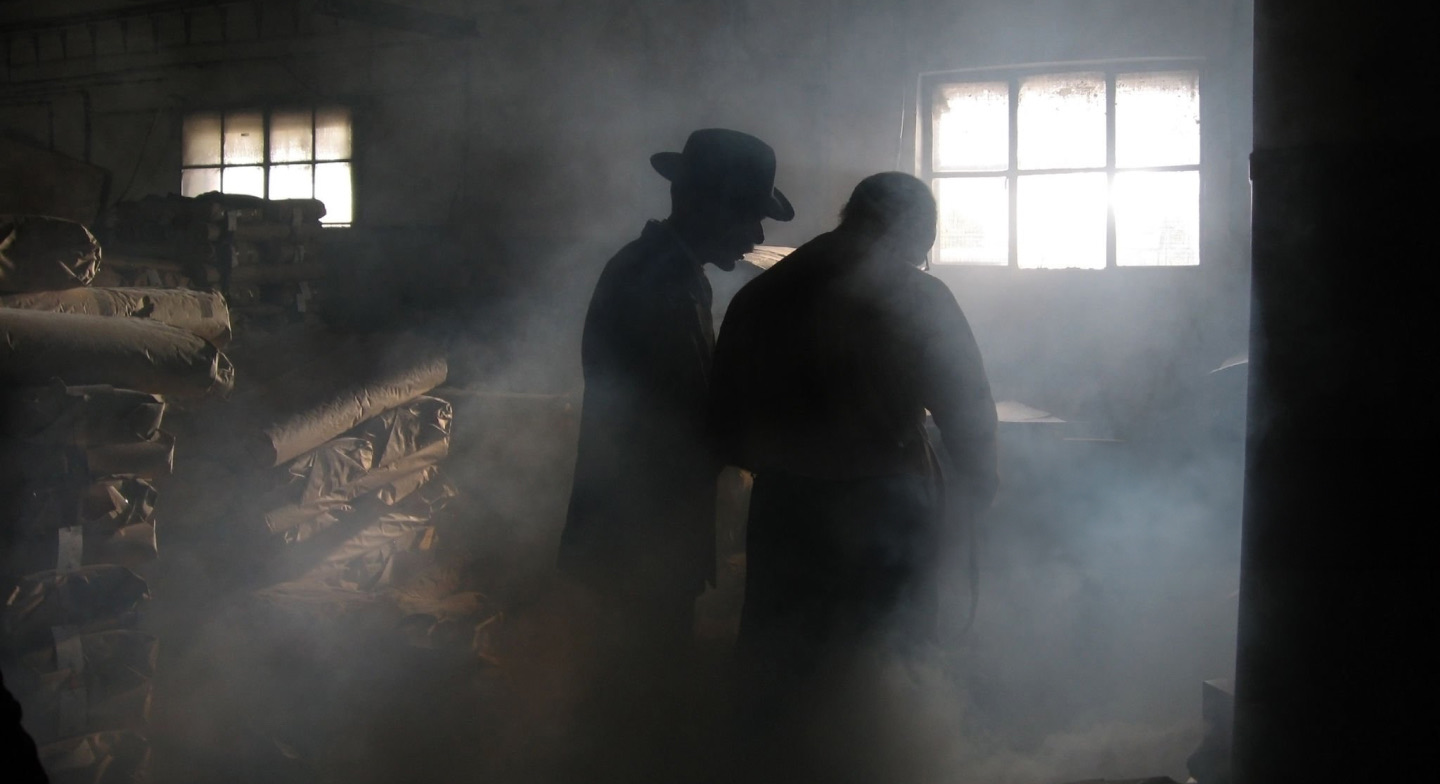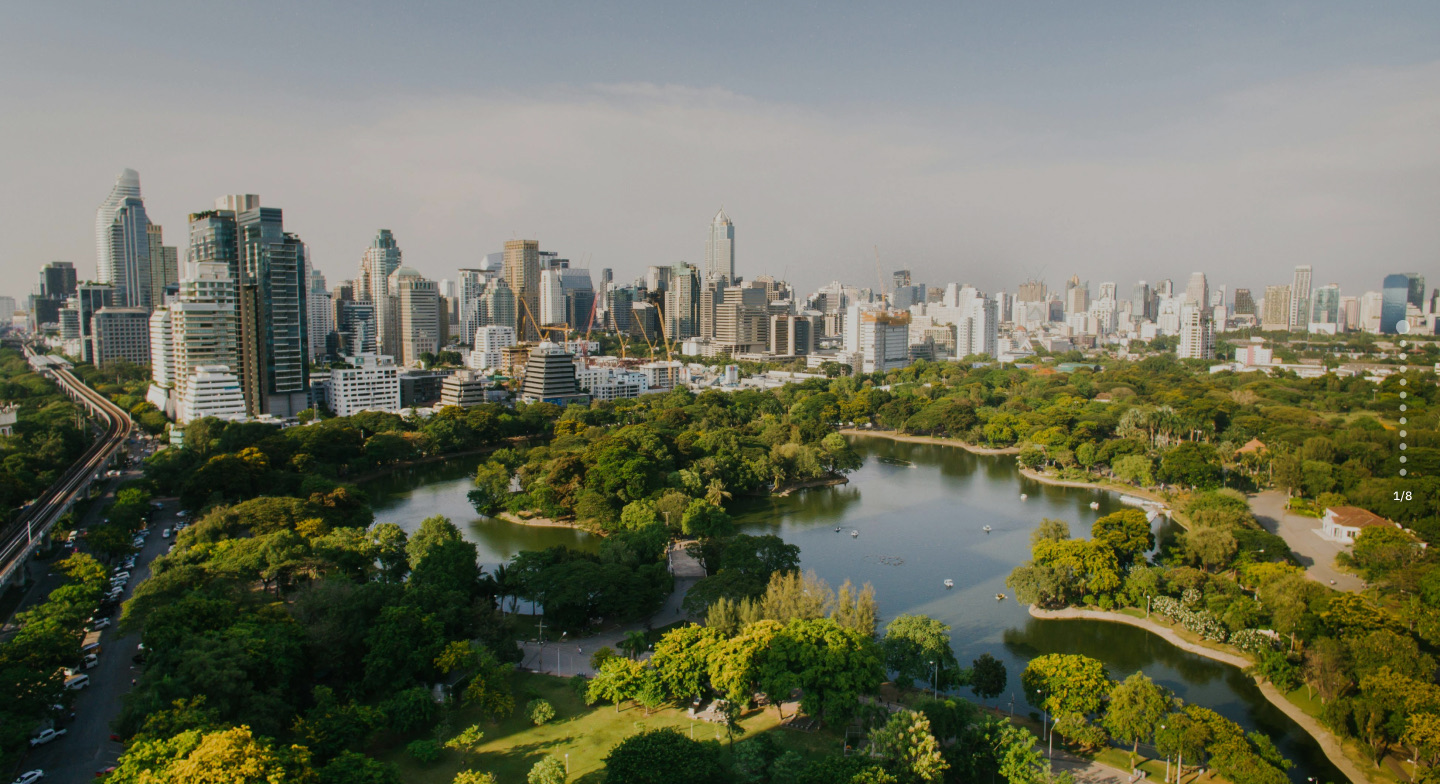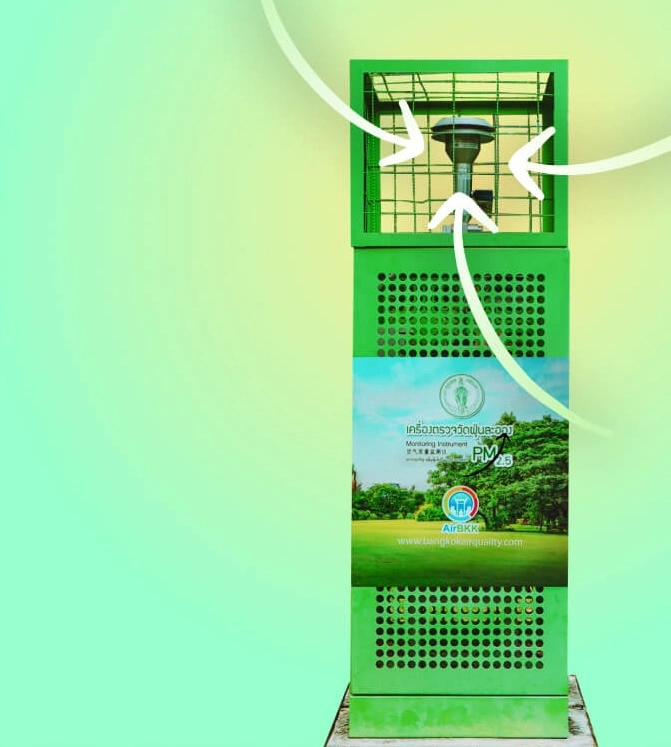




PM2.5 dust in
Where does Bangkok come from?
-
Diesel car : 46%
What is ?
-
Biomass combustion: 22%
What is ?
-
Secondary dust : 14%
What is ?
-
Gasoline car : 11%
What is ?
-
Others : 7%
What is ?
Did you know?
Dust at high altitudes and dust at ground level
They have different origins.
In high places, dust comes from
The sun!?
(High = 10th floor and above)
yes sunlightIt will react chemically with gases in the air (secondary dust) to produce dust. Which is something that happens naturally. But there is still some dust from factories and construction floating in and mixing in.
Ground level dust
It comes from vehicle fumes and burning.
(Ground level = Floor 1 to Floor 10)
Dust fromDiesel vehicle fumes and burning There will be large molecules, causingFloating low When you walk on the street or if you are on the 1st to 10th floor, you are exposed to dust from these two sources.
Season change
The source of dust has also changed.
Dust from biomass combustion
From the nearby area is a source
Origin of PM2.5 dust
To health
To health
There are 6 types of PM2.5 dust.
Midnight Particle Patterns
- Occurs when the air cools after midnight
- High humidity causes fine dust to condense into larger dust particles
- Most commonly found after midnight until early morning
Inversion Particle Patterns
- Born between December and February
- Caused by the Temperature Inversion phenomenon where air does not move
- The cold and windless air causes dust to accumulate in the area
Transboundary Particle Patterns:
- Dust from burning agricultural materials outside Bangkok
- Wind blows dust into Bangkok and accumulates in the air.
- Often found at an altitude of 110 meters.
Secondary Particle Patterns
- Dust that results from chemical reactions in the air when sunlight is strong
- Including gases such as SO2, NOX, NH3
- Occurs in closed weather conditions with light or calm winds
Mixed Particle Patterns
- It is a combination of different types of dust, such as midnight dust and temperature inversion dust
- Causing PM2.5 concentrations to remain high throughout the day
Dust has no pattern (Unpattern)
- Dust that does not fall into any category
- PM2.5 concentrations often exceed standards for only 1-2 hours
Know the origin, understand the problem
Fix it right on point
You can also participate.

Check engine conditionConsistently
"Car project reduces dust" Offer a maximum discount of 55%

ใช้รถสาธารณะแทนการขับรถ หรือดับเครื่องขณะจอดรอ

Registered Entrepreneur
Work From Home when there is high dust

If you find the cause of dust, please report it via Traffy Fondue

Do not burn waste

With everyone's cooperation
We can reduce the PM2.5 dust problem.
In Bangkok, you can
Frequently asked questions
What is the Dust Detective Project?
The Dust Detective Project is a project that focuses on studying and analyzing the sources of PM2.5 dust in Bangkok in order to prevent and solve the problem at the source.
Where does PM2.5 dust in Bangkok come from?
From the study of the Dust Detective Project, it was found that PM2.5 dust in Bangkok comes from 5 main sources:
- Diesel car : 46%
- Biomass combustion: 22%
- Secondary dust : 14%
- Gasoline car : 11%
- Others : 7%
What are the sources of PM2.5 dust at different heights?
- At 30 m height: Dust from diesel vehicles (46%) and biomass combustion (22%).
- At 75 m altitude: other dust (49%) and secondary dust (32%).
- At 110 m: Other dust (58%) and secondary dust (22%).
What are the forms of PM2.5 dust?
PM2.5 dust is divided into 6 main forms:
- Midnight dust: Occurs when temperatures are low and humidity is high, most common after midnight.
- Temperature inversion dust: Occurs when the temperature in the atmosphere near the Earth's surface is colder than in the upper atmosphere.
- Dust from long-distance movement: Coming from a distant source, floating on the wind
- Secondary dust: It is caused by the reaction of sunlight with polluting gases in the atmosphere.
- Mixed dust: It is caused by the combination of various types of dust
- Dust has no form: Unable to classify
How can we play our part in reducing the PM2.5 dust problem?
We can help reduce the PM2.5 dust problem by:
- Avoid using black smoke vehicles.
- Promote the use of public transport
- Control open burning
- Air quality monitoring and alerts
Why do we need to know the patterns of PM2.5 dust?
Knowing the patterns of PM2.5 dust will help design solutions that are targeted, as each pattern has different sources, behaviors, and timing of occurrence.
What are some solutions to the PM2.5 dust problem in Bangkok?
There are several ways to solve the PM2.5 dust problem, such as:
- Low Emission Zone:This car reduces dust. People bring their cars for free check-ups, oil changes, and special prices on parts and labor
- Low Emission Zone:Proactive air quality monitoring Inspect factories and vehicles to find the source of PM2.5 dust and solve the problem from the beginning.
- Work from home Work From Home Supporting government and private sectors to work from home on dusty days
- BMA Feeder Modern air-conditioned vehicles help reduce emissions from private cars, leading to improved air quality and a healthier environment
- Low Emission Zone: BKK Clean Air Area Plant trees, install air purifiers and raise awareness among youth.
- Low Emission Zone: Project Control dust emissions from various sources in the controlled zones, starting at Pathumwan District
- Alert service when high dust values pass Line Alert It will help you to receive notifications when PM 2.5 dust values exceed the standard


 Back to PM2.5 dust page
Back to PM2.5 dust page








